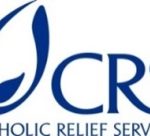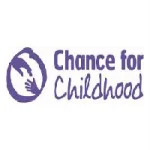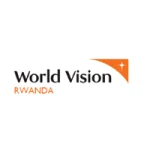Tearfund is an International Christian organisation partnering with the local church wherever possible to see change in the lives of those in greatest economic need.
Website: https://www.tearfund.org
Terms of Reference (ToR)
Consultancy Services for Climate Vulnerability and Risk Research including Baseline data collection for the Reversing Environmental Degradation in Africa and Asia (REDAA).
Project title: Strengthening Systems: Analyzing Policy Implementation and Building Local Capacity to Reverse Environmental Degradation in Rwanda’s Southern Province (Huye and Gisagara Districts)
Donor: Foreign, Commonwealth & Development Office (FCDO)
Project Period: 2024-2027
- Background
Tearfund Rwanda is launching a project to combat environmental degradation in the Southern Province of Rwanda, focusing on the Huye and Gisagara Districts. This initiative aims to tackle major environmental issues such as climate vulnerability and risk through targeted interventions based on thorough research and analysis.
The project will benefit 4,000 smallholder farmers by providing training in sustainable agricultural practices that protect the environment and restorative methods like agroforestry.
Tearfund will conduct community-level research to evaluate the implementation and impact of these policies in Huye and Gisagara, the districts most affected by environmental degradation. The insights gained will guide strategies and plans for evidence-based, locally-driven actions, promoting more integrated and sustainable community engagement and solutions to address environmental degradation.
In this context, Tearfund is seeking consultancy services to carry out a baseline survey, assess climate vulnerability and risk, and evaluate existing environmental and climate policies and programs in the targeted communities.
- Objectives
The primary objectives of the consultancy are as follows:
- Baseline Survey: To create a detailed baseline assessment of current environmental conditions, community livelihoods, and existing climate adaptation and mitigation strategies. This survey will primarily focus on gathering data for the project’s logframe indicators.
- Climate Vulnerability and Risk Assessment: To assess the vulnerability of communities in Huye and Gisagara Districts to climate change and identify key risks and impacts.
- Evaluation Research: To evaluate the effectiveness of existing environmental and climate policies and programs in the target districts.
The specific objectives of the assignment are as follows:
- Current Condition Assessment:
- Document the existing state of the landscape in terms of land use, forest conditions, and agro-ecological systems. This includes mapping land cover types, evaluating soil health, assessing forest density and biodiversity, and reviewing current management practices.
- Assess Knowledge and Understanding of Social Dimensions of Vulnerability and Resilience to Climate Change:
- Evaluate the extent to which communities understand the social factors influencing their vulnerability and resilience to climate change.
- Investigate how social dimensions such as socioeconomic status, education, and community networks affect their ability to cope with and adapt to climate-related challenges.
- Assess Awareness of Climate Change Impacts and Gender-Responsive Climate Adaptation:
- Measure the level of awareness among community members about the impacts of climate change on their environment and livelihoods.
- Evaluate the understanding of gender-specific impacts of climate change and the incorporation of gender-responsive strategies in climate adaptation practices.
- Assess Community Capacity to Plan, Implement, and Monitor Adaptation Programs:
- Determine the communities’ ability to develop and execute effective climate adaptation plans.
- Evaluate their skills and resources for monitoring and assessing the outcomes of adaptation initiatives.
- Assess Capacity and Institutional Arrangements:
- Examine the existing institutional frameworks and organizational structures supporting climate adaptation efforts.
- Assess the capacity of local institutions and stakeholders to manage and coordinate adaptation programs effectively.
Outcomes and Outcome Indicators
Outcome 1: Restored landscape with ecosystems such as land use management systems, forest management, and agro-ecological systems
- Percentage of people stating that they are aware of the environmental protection and restoration policies.
- Forest and agroforestry tree coverage (ha) in the most affected area with support of the REDAA funded initiative.
- Percentage increase of smallholder farmers practicing land conservation practices in the targeted area.
Outcome 2: Enhanced level of community engagement and participation in environmental decision-making processes and policy implementation
- Number of SHGs (Self-Help Groups) with disaster preparedness funds.
- Number of community meetings and workshops held.
- Percentage of people stating that they are aware of the environmental protection and restoration policies.
Outcome 3: Local stakeholders equipped with innovative skills and technical knowledge of environmental restoration
- Number of local leaders whose knowledge and skills on environmental restoration significantly improved.
- Number of persons equipped by REDAA funded projects to become environmental restoration planners and advocates.
Outcome 4: Improved environmental management systems with strong environmental monitoring systems for data-driven decision making
- Number of environmental actions implemented and/or readapted.
- Number of district environmental monitoring systems established and/or improved.
Outputs and Output Indicators
Output 1.1: Smallholder farmers adopting agroforestry and other suitable landscape restoration practices
- Number of smallholder farmers trained on environmental sustainability practices (disaggregated by sex).
Output 1.2: Tree plantations are rehabilitated and sustainably managed for productive and ecological services
- Number of smallholder farmers planting trees in their own lands.
- Number of trees planted (disaggregated by categories).
- Area (ha) of forest and agro-forest cover (disaggregated by afforestation/restored forest and agro-forest).
- Number of climate-resilient initiatives supported by the project.
- Number of people supported to cope with effects of climate change (disaggregated by sex and youth).
Output 2.1: Strengthened level of community involvement in environmental management and rehabilitation in compliance with applicable environmental policies
- Number of green jobs created as a result of the project.
- Number of people involved in the established safe space networks for tackling degradation issues and planning restoration actions.
Output 2.2: Climate change mitigation and adaptation measures (planning, implementation, and monitoring) are mainstreamed in targeted districts’ development plans
- Number of workshops conducted to identify and integrate climate resilience metrics into annual district development strategies and performance contracts.
- Number of districts’ development plans revised to include climate mitigation and adaptation measures.
Output 3.1: Increased knowledge and skills on environmental degradation issues for decision-makers and regulatory personnel
- Number of community action plans for climate change mitigation and adaptation measures implemented at the community level.
- Number of people trained on environmental restoration practices (disaggregated by sex).
Output 4.1: Local leaders and community facilitators are equipped to monitor the implementation of environmental policies
- Number of persons participating in the intensive awareness and outreach campaign among the public about environmental issues and their coping mechanisms.
- Number of local leaders and community members jointly monitoring the implementation of environmental policies in the most affected areas.
- Number of vulnerable people including women, elderly, and people with disabilities participating in the implementation of environmental policies at the community level.
Output 4.2: Enhanced knowledge and information systems for decision and negotiation support
- Number of people with improved knowledge of environmental restoration after getting trained on environmental monitoring systems (disaggregated by sex).
- Number of project progress reports produced.
- Mid and end-term evaluations are conducted and reports are produced.
- Joint monitoring visits are conducted.
- Scope of Work
The consultant will be responsible for the following tasks:
- Desk Review:
- Review relevant literature, policy documents, and previous research related to environmental and climate issues in Rwanda, with a focus on Huye and Gisagara Districts.
- Analyze existing baseline data and assessments.
- Baseline Survey:
- Design and administer surveys to collect data on current environmental conditions, community livelihoods, and existing adaptation/mitigation strategies. This will involve collecting data for every indicator specified in the project logframe.
- Conduct field visits to collect primary data for the project’s logframe indicators by utilizing structured interviews, focus group discussions, and observations.
- Analyze survey data and compile a baseline report.
- Climate Vulnerability and Risk Assessment:
- Identify and evaluate the major climate risks and vulnerabilities faced by communities in the target districts.
- Assess the adaptive capacity of communities and identify gaps in current adaptation strategies.
- Develop a report with recommendations for addressing identified vulnerabilities and risks.
- Evaluation Research:
- Evaluate the effectiveness and impact of current environmental and climate policies and programs in the target districts.
- Conduct key informant interviews with stakeholders, including government officials, NGOs, community leaders, and communities.
- Review and analyze the implementation and outcomes of these policies and programs.
- Prepare an evaluation report with findings and recommendations for policy and program improvement.
- Methodology
The consultant is expected to use a mixed-methods approach, including:
- Desk Review: Analysis of secondary data and documents.
- Quantitative Methods: Surveys, statistical analysis.
- Qualitative Methods: Key informant interviews, focus groups, and observations.
- Deliverables
The consultant is expected to deliver the following:
- Inception Report: Detailing the methodology, work plan, and data collection tools.
- Comprehensive analysis of baseline data and findings.
- Detailed assessment and recommendations.
- Evaluation findings and recommendations for policy and program improvements.
- Final Report: Detailed findings and recommendations to stakeholders.
- Presentation: A concise overview of the findings and recommendations.
- Qualifications and Experience
The selection of the consultants/firm will be based on the quality of their proposal (including methodologies, tools, quantifications, time schedule, CV, their financial offer, the relevant educational background and experience of the applicants in similar activities.
The applicants should have the following qualifications:
- The consultants/firm should have at least 5 years’ experience in environment and climate change advisory and research services for economic and social development.
- The team leader should be at least a master’s degree holder and experienced in Land Use and Forestry, Biodiversity and Natural Resources Management, Green Growth, Climate Resilience and Environmental Management or other related disciplines
- Team members should have at least 3 research publications in the social sciences
- The applicants should have an experienced team staff relevant to the assignment.
- Application Process
Interested consultants/firm should submit:
- Cover Letter expressing interest and suitability for the assignment.
- A technical proposal detailing their approach, methodology, and work plan.
- A financial proposal outlining the budget.
- CVs of key personnel.
- Proof of previous relevant work.
- Valid Tax clearance Certificate provided by RRA and RSSB certificate
- Certificate of using EBM
- Application deadline
- Applications should be submitted by 17:00 GMT on 13th September 2024 to the Tearfund Rwanda office located at Kigali on KG 383 Street, Gaculiro, Telephone: +250788549114, in a sealed envelope labeled “REDAA Project Risk Analysis and Vulnerability Assessment’’ or by E-mail: rwanda-procurement@tearfund.org with Cc to vincent.kayigema@tearfund.org
- Applications will be assessed based on the technical quality (70%) and the proposed budget / value for money (30%). For technical quality, the following will be considered: Experience and qualifications of bidder/team, strength of proposed methodology, work plan and schedule of activities.
- Tearfund reserves the right to negotiate the timeline and budget with the bidder before offering a Contract.
Note: Late and incomplete applications will not be considered.





